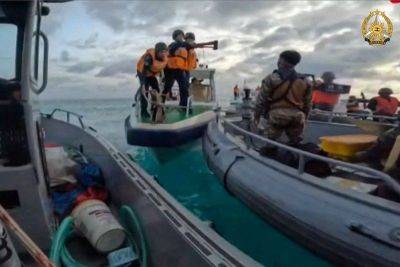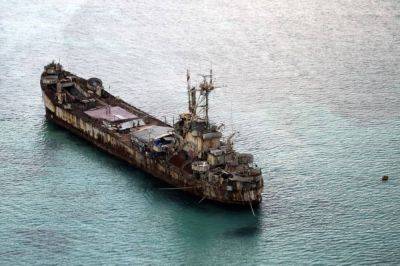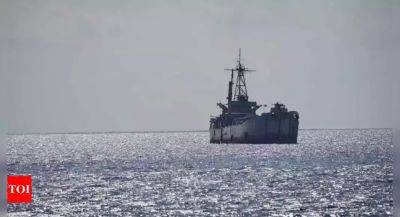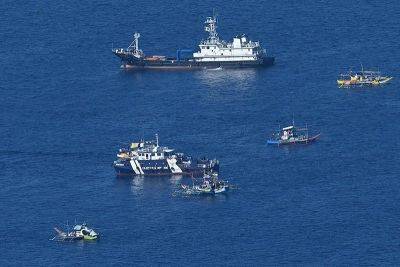Chinese ships circling PCG vessel in Escoda
A LONE Philippine Coast Guard (PCG) ship is the subject of continued harassment by Chinese vessels at Escoda (Sabina) Shoal in the West Philippine Sea.
Monitoring of the area shows that China Coast Guard (CCG) 3303 has been circling the BRP Teresa Magbanua for 10 days at the atoll, which is about 74 nautical miles from Palawan, well within the Philippines' exclusive economic zone.
The Magbanua has been in the area for the past weeks and has been largely stationary while monitoring the activity of Chinese ships there, Sealight, a maritime transparency project that monitors and reports activities in the South China Sea, said.
On Saturday morning, China's maritime militia ship Qiong Sansha Yu 00006 passed within 50 meters of Magbanua. Two hours later, CCG 3303 also did so.
On May 31, aside from Magbanua, nine Chinese maritime militia (CMM) vessels and one CCG ship were sighted off Escoda.
Escoda Shoal has exhibited signs of coral dredging — a process that inflicts significant harm on the marine ecosystem in the region and a sign that reclamation is in the works.
In April, the PCG announced it had discovered that the low-tide elevation surrounding Escoda Shoal was in a similar degraded state as the Pag-asa Cays.
AdvertisementThe discovery was made after more than three weeks of monitoring.
During the survey, the PCG implemented a standard operating procedure of launching rigid hull inflatable boats to inspect the low-tide elevation at Escoda Shoal, particularly for any dumped crushed corals.
In March, Dr. Jonathan Anticamaran and a team of scientists conducted a survey of the area and found visible discoloration of its seabed, strongly indicating that deliberate activities may have been undertaken to modify the natural topography of its underwater terrain.
The report said the presence of crushed corals strongly suggests a potential act of dumping, possibly involving the same dead corals that were previously processed and cleaned before being returned to the seabed.
AdvertisementIt is believed that the dumping of crushed corals in the area may be in preparation for China's reclamation activities to build structures on top of the maritime feature.
Despite China's denial







